Fitted Office Furniture: Enhancing Your Workspace
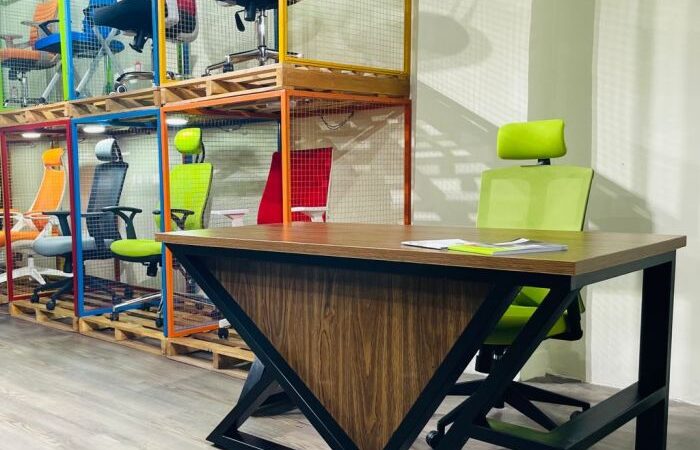
Fitted office furniture goes beyond the ordinary, offering a tailored approach to workspace design. It allows you to create a space that perfectly aligns with your needs, aesthetics, and functionality. From custom desks and cabinets to ergonomic workstations, fitted office furniture transforms your office into a highly efficient and visually appealing environment.
This type of furniture provides numerous advantages, including maximizing space utilization, offering personalized customization options, and enhancing the overall aesthetics and functionality of your office. Fitted office furniture seamlessly integrates with your existing space, creating a cohesive and harmonious work environment.
What is Fitted Office Furniture?
Fitted office furniture is specifically designed and built to perfectly fit the dimensions and layout of your office space. It goes beyond standard office furniture, offering a tailored solution that maximizes functionality, aesthetics, and efficiency. Fitted office furniture offers several benefits over standard, off-the-shelf options.
These benefits can significantly enhance your office environment and productivity.
Benefits of Fitted Office Furniture
Fitted office furniture provides a range of advantages that can significantly enhance your office environment and productivity. Here are some of the key benefits:
- Maximized Space Utilization: Fitted furniture is designed to make the most of every inch of your office space. It eliminates wasted space, allowing you to create a more functional and efficient layout.
- Enhanced Functionality: Fitted furniture can be customized to meet your specific needs. This means you can incorporate features like integrated storage, cable management systems, and ergonomic workstations, optimizing your workflow.
- Improved Aesthetics: Fitted furniture can create a cohesive and stylish look for your office. It allows you to choose materials, colors, and finishes that reflect your brand identity and create a professional and inviting atmosphere.
- Increased Productivity: By maximizing space and functionality, fitted office furniture can contribute to a more organized and efficient work environment, ultimately boosting productivity.
- Long-Term Investment: Fitted furniture is a long-term investment that can last for years. Its durability and customization make it a worthwhile choice for businesses seeking a lasting and adaptable solution.
Types of Fitted Office Furniture
Fitted office furniture encompasses a wide range of options to meet various needs. Some common types include:
- Fitted Desks: These desks are designed to fit perfectly into your space, whether it’s a corner office, a small cubicle, or a large executive suite. They can incorporate features like integrated drawers, cable management systems, and adjustable heights to enhance functionality.
- Fitted Cabinets: Fitted cabinets offer a tailored storage solution for your office. They can be designed to fit specific areas, such as behind a desk or along a wall, and can include features like sliding doors, shelves, and drawers to optimize storage.
- Fitted Workstations: Fitted workstations are designed to create a dedicated and functional work area for each employee. They can incorporate desks, storage units, and even integrated lighting to enhance productivity and comfort.
Benefits of Fitted Office Furniture
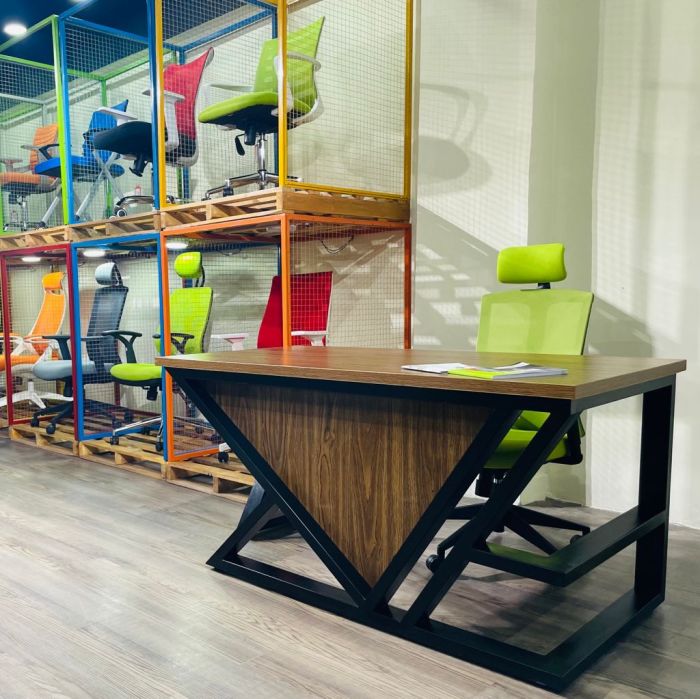
Fitted office furniture offers a range of advantages that can significantly enhance the functionality, aesthetics, and overall efficiency of any workspace. By tailoring furniture to the specific dimensions and requirements of an office, fitted solutions maximize space utilization, create a more organized and visually appealing environment, and cater to individual needs and preferences.
Space Optimization
Fitted office furniture is designed to make the most of every square foot of space. Precisely measuring and customizing furniture to fit the unique layout of an office, eliminates wasted areas and creates a more streamlined and efficient work environment.
This is particularly beneficial for smaller offices or those with limited space, as it allows for the maximum utilization of available area without compromising on functionality.
- Built-in Storage Solutions: Fitted furniture often incorporates integrated storage solutions, such as drawers, shelves, and cabinets, which maximize vertical space and minimize clutter. This allows for efficient organization and easy access to essential items, freeing up valuable floor space.
- Customizable Workstations: Fitted workstations can be designed to accommodate specific workflows and individual needs. This allows for the optimal placement of desks, chairs, and other equipment, creating a comfortable and productive workspace.
- Space-Saving Configurations: Fitted furniture can be configured in various space-saving ways, such as using corner desks, wall-mounted units, and modular components. This allows for flexible layouts that adapt to changing needs and maximize the use of available space.
Customization Options
One of the key advantages of fitted office furniture is the extensive customization options it offers. This allows for the creation of a truly unique and personalized workspace that reflects the specific needs and preferences of the occupants.
- Material Selection: A wide range of materials, including wood, metal, glass, and laminates, are available for fitted furniture. This allows for the selection of materials that complement the existing office decor and create a desired aesthetic.
- Color and Finish Options: Fitted furniture can be customized with a variety of colors and finishes to match the office’s overall design scheme. This allows for the creation of a cohesive and visually appealing workspace.
- Functional Features: Fitted furniture can be designed with specific functional features, such as built-in cable management systems, adjustable desks, and integrated lighting. This enhances the functionality and comfort of the workspace.
Enhanced Aesthetics and Functionality, Fitted office furniture
Fitted office furniture can significantly enhance the aesthetics and functionality of an office space. By seamlessly integrating with the existing architecture and design, it creates a cohesive and visually appealing environment that promotes a positive and productive work atmosphere.
- Improved Aesthetics: Fitted furniture can be designed to complement the existing office decor and create a cohesive and visually appealing environment. This can help to create a more professional and welcoming workspace.
- Increased Functionality: Fitted furniture can be customized with specific functional features, such as built-in cable management systems, adjustable desks, and integrated lighting. This enhances the functionality and comfort of the workspace.
- Enhanced Organization: Fitted furniture often incorporates integrated storage solutions, which helps to create a more organized and efficient work environment. This can help to reduce clutter and improve productivity.
Design Considerations for Fitted Office Furniture
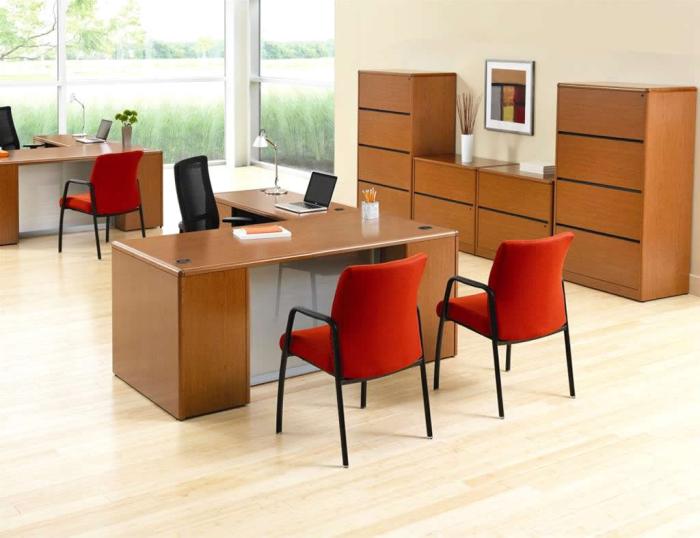
Designing fitted office furniture involves careful planning and consideration of various factors to create a functional, aesthetically pleasing, and comfortable workspace. This approach ensures that the furniture perfectly complements the office space and meets the specific needs of the occupants.
Ergonomics in Fitted Office Furniture Design
Ergonomics plays a crucial role in designing fitted office furniture. It focuses on optimizing the workspace to enhance comfort, reduce the risk of injuries, and improve productivity. By incorporating ergonomic principles, fitted office furniture can contribute to a healthier and more efficient work environment.
- Adjustable Seating: Fitted office furniture should include adjustable chairs that allow users to customize their seating height, backrest angle, and armrest positions. This ensures proper posture and reduces strain on the back, neck, and shoulders.
- Work Surface Height: The height of the work surface should be adjustable to accommodate different user heights and tasks. A comfortable work surface height minimizes strain on the wrists, arms, and shoulders.
- Keyboard and Mouse Placement: The keyboard and mouse should be positioned at a comfortable distance and height to prevent repetitive strain injuries.
- Monitor Placement: The monitor should be placed at eye level to minimize neck strain.
- Lighting: Adequate lighting is essential for reducing eye strain and improving visibility. Fitted office furniture design should consider natural light sources and incorporate appropriate artificial lighting.
Integrating Technology into Fitted Office Furniture Design
The integration of technology into fitted office furniture is becoming increasingly common. This integration enhances functionality, improves collaboration, and streamlines workflows.
- Cable Management: Fitted office furniture should include integrated cable management systems to minimize clutter and ensure a neat and organized workspace.
- Power Outlets: Easy access to power outlets is crucial for powering devices. Fitted office furniture can incorporate built-in power outlets, providing convenient access to electricity.
- Smart Desk Features: Smart desks with adjustable height, integrated lighting, and charging stations are becoming increasingly popular. These features enhance user comfort and productivity.
- Video Conferencing Capabilities: Fitted office furniture can be designed to accommodate video conferencing needs, with integrated cameras, microphones, and screens.
Materials and Finishes for Fitted Office Furniture
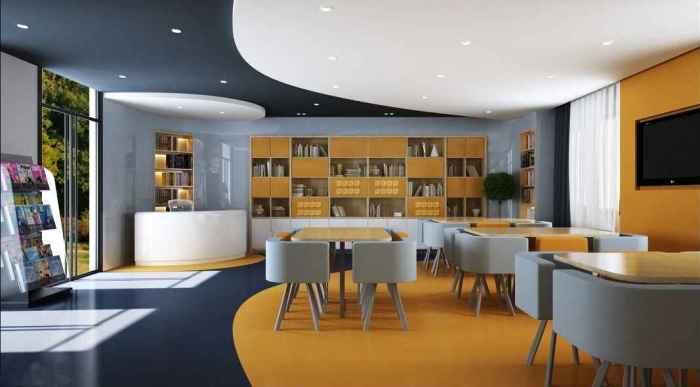
The materials and finishes used for fitted office furniture play a crucial role in determining its aesthetic appeal, durability, and overall functionality. They should be chosen carefully to complement the design, meet the specific needs of the workspace, and withstand the wear and tear of daily use.
Common Materials Used for Fitted Office Furniture
The choice of materials for fitted office furniture depends on factors such as budget, desired aesthetic, and functionality.
- Wood: Wood is a popular choice for fitted office furniture due to its natural beauty, durability, and versatility. It can be stained or painted to achieve various finishes. Common wood types used include oak, maple, cherry, walnut, and pine.
- Metal: Metal is another durable option for fitted office furniture, offering a modern and industrial aesthetic. Steel, aluminum, and stainless steel are commonly used for frames, desks, and storage units. Metal can be powder-coated or painted to match the desired color scheme.
- Glass: Glass is often incorporated into fitted office furniture for its sleek and modern appearance. It can be used for desktops, shelves, and partitions. Tempered glass is used for safety and durability.
- Laminate: Laminate is a cost-effective and durable material that mimics the look of wood, stone, or other materials. It is easy to clean and maintain, making it suitable for high-traffic areas.
- Melamine: Melamine is a similar material to laminate, offering durability and affordability. It is often used for cabinet doors, drawer fronts, and work surfaces.
Finishes for Fitted Office Furniture
Finishes can significantly impact the look and feel of fitted office furniture. They protect the underlying material from scratches, stains, and wear while enhancing its aesthetic appeal.
- Paint: Paint is a versatile finish that allows for a wide range of colors and effects. It can be used to create a sleek and modern look or a more traditional and rustic feel.
- Stains: Stains are used to enhance the natural grain and color of wood. They can be applied in various shades to achieve different looks, from light and natural to dark and rich.
- Varnish: Varnish is a clear protective coating that enhances the natural beauty of wood while providing a durable finish. It can be applied in gloss, semi-gloss, or matte finishes.
- Lacquer: Lacquer is a durable and glossy finish that is often used for furniture and wood products. It provides a protective layer that resists scratches, stains, and water damage.
- Powder Coating: Powder coating is a durable and eco-friendly finish that is often used for metal furniture. It involves applying a dry powder to the metal surface and then curing it in an oven. Powder coating provides a smooth, scratch-resistant, and aesthetically pleasing finish.
Durability and Maintenance Requirements
The durability and maintenance requirements of fitted office furniture materials and finishes vary.
- Wood: Wood is a durable material that can last for many years with proper care. It requires regular cleaning and conditioning to prevent drying and cracking. Wood furniture should be protected from moisture and direct sunlight to prevent warping and fading.
- Metal: Metal is also a durable material, but it can be susceptible to rust and corrosion. Metal furniture should be cleaned regularly with a mild detergent and water. It is important to avoid using abrasive cleaners or harsh chemicals that can damage the finish.
- Glass: Glass is a fragile material, but tempered glass is more durable and resistant to breakage. Glass furniture should be cleaned regularly with a glass cleaner and a microfiber cloth. Avoid using harsh chemicals or abrasive cleaners that can scratch the surface.
- Laminate and Melamine: Laminate and melamine are both durable and easy to clean. They can be wiped down with a damp cloth and a mild detergent. Avoid using harsh chemicals or abrasive cleaners that can damage the finish.
Installation and Maintenance of Fitted Office Furniture
The installation and maintenance of fitted office furniture are crucial aspects to consider for ensuring its longevity and optimal performance. Proper installation ensures a secure and functional workspace, while regular maintenance helps preserve the furniture’s aesthetics and functionality.
Installation Process for Fitted Office Furniture
The installation process for fitted office furniture typically involves several steps, starting with the delivery of the furniture components and ending with the final assembly and setup.
- Delivery and Unpacking: The fitted office furniture is delivered to the designated location in pre-assembled or semi-assembled components. It is essential to ensure that all components are present and in good condition before unpacking.
- Preparation: The installation area should be cleared of any obstacles and debris. The floor should be level and free of any imperfections that could hinder the installation process.
- Assembly: The installation team will assemble the furniture components according to the manufacturer’s instructions. This typically involves connecting various pieces using specialized tools and techniques.
- Installation: The assembled furniture is then installed in the designated space. This may involve attaching the furniture to the walls, floor, or ceiling using appropriate fasteners.
- Final Adjustments: After installation, the furniture is adjusted to ensure that it is level, stable, and properly aligned. This includes adjusting the height, position, and angle of the furniture components.
- Testing and Inspection: Once the installation is complete, the furniture is thoroughly tested and inspected to ensure that it is functioning properly. This includes checking the drawers, doors, and other features to ensure they are operating smoothly.
Tips for Maintaining Fitted Office Furniture
Regular maintenance is essential for preserving the aesthetics and functionality of fitted office furniture.
- Cleaning: Dust and dirt can accumulate on the surface of the furniture over time, leading to wear and tear. Regular cleaning with a soft cloth and a mild cleaning solution can help prevent this.
- Lubrication: Moving parts, such as drawers and hinges, should be lubricated regularly to ensure smooth operation. Using a light oil or lubricant specifically designed for furniture can help prevent squeaking and sticking.
- Inspecting for Damage: Regularly inspect the furniture for any signs of damage, such as scratches, dents, or loose fasteners. Address any damage promptly to prevent further deterioration.
- Avoiding Harsh Chemicals: Avoid using harsh chemicals or abrasive cleaners on the furniture, as they can damage the finish and surface.
- Protecting from Sunlight: Prolonged exposure to direct sunlight can cause the furniture to fade and deteriorate. Using blinds or curtains to minimize direct sunlight exposure can help preserve the furniture’s color and finish.
Importance of Professional Installation and Maintenance
Professional installation and maintenance of fitted office furniture offer several advantages:
- Expertise and Skill: Professional installers have the expertise and skill to install the furniture correctly, ensuring a secure and functional workspace. They are familiar with the intricacies of fitted office furniture and can handle complex installations efficiently.
- Safety: Professional installation reduces the risk of accidents or injuries that can occur during DIY installations. They have the proper tools and safety equipment to handle the installation process safely.
- Warranty: Many manufacturers require professional installation to maintain the warranty on fitted office furniture. Professional installation ensures that the furniture is installed correctly and meets the manufacturer’s specifications, thereby preserving the warranty coverage.
- Long-Term Durability: Professional maintenance helps extend the lifespan of the furniture. Regular inspections and maintenance by qualified professionals can identify and address potential problems before they become significant issues, ensuring the furniture’s long-term durability.
Professional installation and maintenance are essential for maximizing the longevity, functionality, and aesthetic appeal of fitted office furniture. Investing in these services ensures a secure, functional, and well-maintained workspace for years to come.
Cost Considerations for Fitted Office Furniture
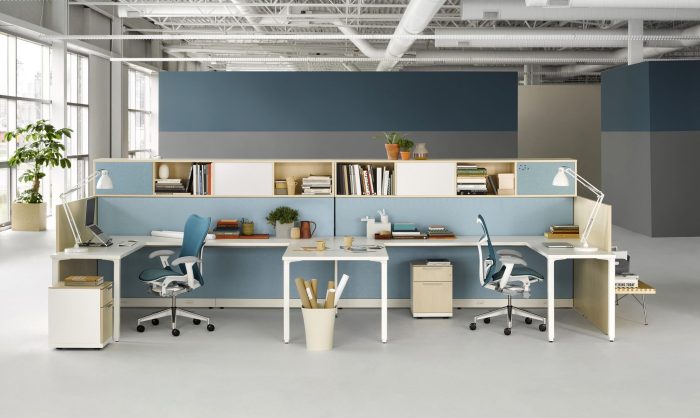
Fitted office furniture can be a significant investment, and it’s crucial to understand the factors that influence its cost to make informed decisions. The cost of fitted office furniture can vary considerably, and it’s important to consider these factors to create a budget that aligns with your needs and resources.
Factors Influencing Cost
The cost of fitted office furniture is influenced by several factors, including the materials used, the complexity of the design, and the level of customization required.
- Materials: The type of materials used for the furniture significantly impacts its cost. High-quality materials, such as solid wood, leather, and metal, will generally be more expensive than less durable options like particleboard or vinyl. For example, a fitted office desk made from solid oak will cost more than one made from laminate.
- Design: The complexity of the design also plays a role in the cost. A simple, straightforward design will be less expensive than a more elaborate design with intricate details or unique features. For instance, a fitted office desk with built-in drawers and cable management systems will cost more than a simple desk with a flat surface.
- Customization: The level of customization you require will also impact the cost. Custom-made furniture, designed to meet your specific requirements, will be more expensive than off-the-shelf furniture. For example, a fitted office desk designed to fit a specific space and incorporate your desired features will cost more than a standard desk.
- Installation: The cost of installation can also vary depending on the complexity of the furniture and the size of the space. Professional installation is generally recommended for fitted office furniture, as it ensures proper assembly and alignment.
Budgeting Tips
When budgeting for fitted office furniture, it’s essential to consider your needs and priorities. Here are some tips to help you manage your budget:
- Set a Budget: Before you start shopping, determine a realistic budget for your fitted office furniture. Consider the size of your space, the number of pieces you need, and the level of customization you require.
- Shop Around: Compare prices from multiple suppliers to find the best value for your money. Don’t hesitate to negotiate prices, especially if you’re purchasing a significant amount of furniture.
- Consider Alternatives: Explore alternative materials and designs that may offer a more affordable option without compromising quality. For example, you could choose a laminate desk with a veneer finish instead of a solid wood desk.
- Prioritize: Focus on essential pieces and prioritize your needs. You may not need to purchase every piece of furniture at once, especially if you’re on a tight budget.
Examples of Fitted Office Furniture Solutions
Fitted office furniture solutions are designed to maximize space and functionality, offering a tailored approach to creating efficient and productive work environments. This section explores examples of fitted office furniture solutions for different office types, highlighting their features, benefits, and target audiences.
Examples of Fitted Office Furniture Solutions for Different Office Types
Fitted office furniture solutions can be customized to meet the specific needs of various office types, including:
| Office Type | Example Solution | Features | Benefits | Target Audience |
|---|---|---|---|---|
| Small Office | Compact desk with integrated storage and a wall-mounted filing system. | Space-saving design, integrated storage, modularity. | Maximizes space utilization, enhances organization, and promotes a clutter-free workspace. | Startups, freelancers, home offices. |
| Open Plan Office | Modular workstations with adjustable height desks, integrated cable management, and sound-absorbing panels. | Flexibility, adaptability, ergonomic features, noise reduction. | Encourages collaboration, supports diverse workstyles, promotes employee well-being, and creates a more focused environment. | Tech companies, creative agencies, large corporations. |
| Executive Office | Custom-designed executive desk with built-in technology integration, a spacious conference table, and a comfortable seating area. | High-end materials, bespoke design, advanced technology integration, spacious layout. | Creates a professional and prestigious image, enhances productivity, facilitates meetings and presentations, and provides a comfortable and luxurious workspace. | CEOs, senior managers, and business leaders. |
Examples of Fitted Office Furniture Solutions for Specific Needs
Fitted office furniture can also be tailored to address specific needs, such as:
- Ergonomics: Adjustable height desks, ergonomic chairs, and specialized keyboard trays can be integrated into fitted office furniture solutions to promote employee well-being and reduce the risk of musculoskeletal disorders.
- Technology Integration: Fitted office furniture can incorporate cable management systems, power outlets, and data ports to accommodate modern technology and streamline workflows.
- Sustainability: Fitted office furniture can be made from sustainable materials, such as recycled plastic or bamboo, and can be designed to be durable and long-lasting, reducing the environmental impact of office furniture.
Final Wrap-Up
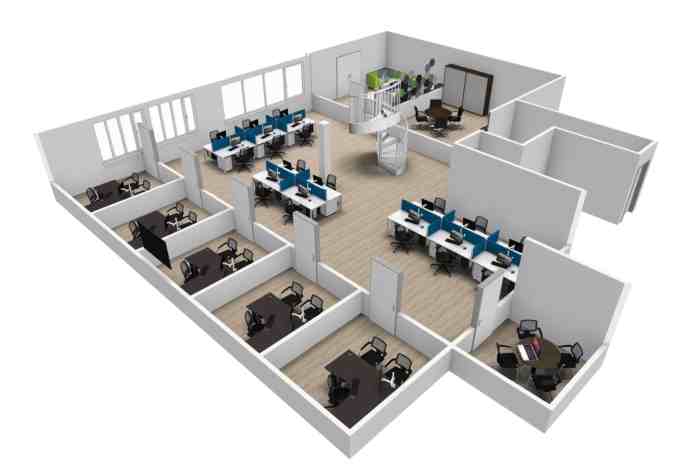
Investing in fitted office furniture is a wise decision for businesses and individuals seeking to elevate their workspace. By carefully considering design elements, materials, and functionality, you can create a space that is both aesthetically pleasing and highly productive. Fitted office furniture provides the flexibility to adapt to changing needs, ensuring a long-lasting and valuable investment in your workspace.
Comments are closed.